Leopold Weinberg, the Zurich-based architect and entrepreneur, believes that art is a social proposition. Growing up surrounded by the joy of art, this belief of Leopold has not only guided him to collect and live with contemporary art, but he also manifests this belief on another level by immersing art into his real estate projects — making art also part of other people’s daily life. Now a co-founder of the We Are Content (WAC) group, he and his business partner exhibit some of the WAC’s art collection in their project venues and collaborate with various artists for site-specific commission projects.
This week, he and his team are launching the window installation by German artist Imi Knoebel at the bar at Volkshaus Basel during the art week in Basel. On this memorable occasion, Leopold shares with LARRY’S LIST why he is particularly drawn to geometric abstract art; his latest purchase of an art piece by Olafur Eliasson; why art has become a cornerstone of all his projects; how he and his team revitalized the historic 1925 building of Volkshaus in Basel; and the experience of working with artists.
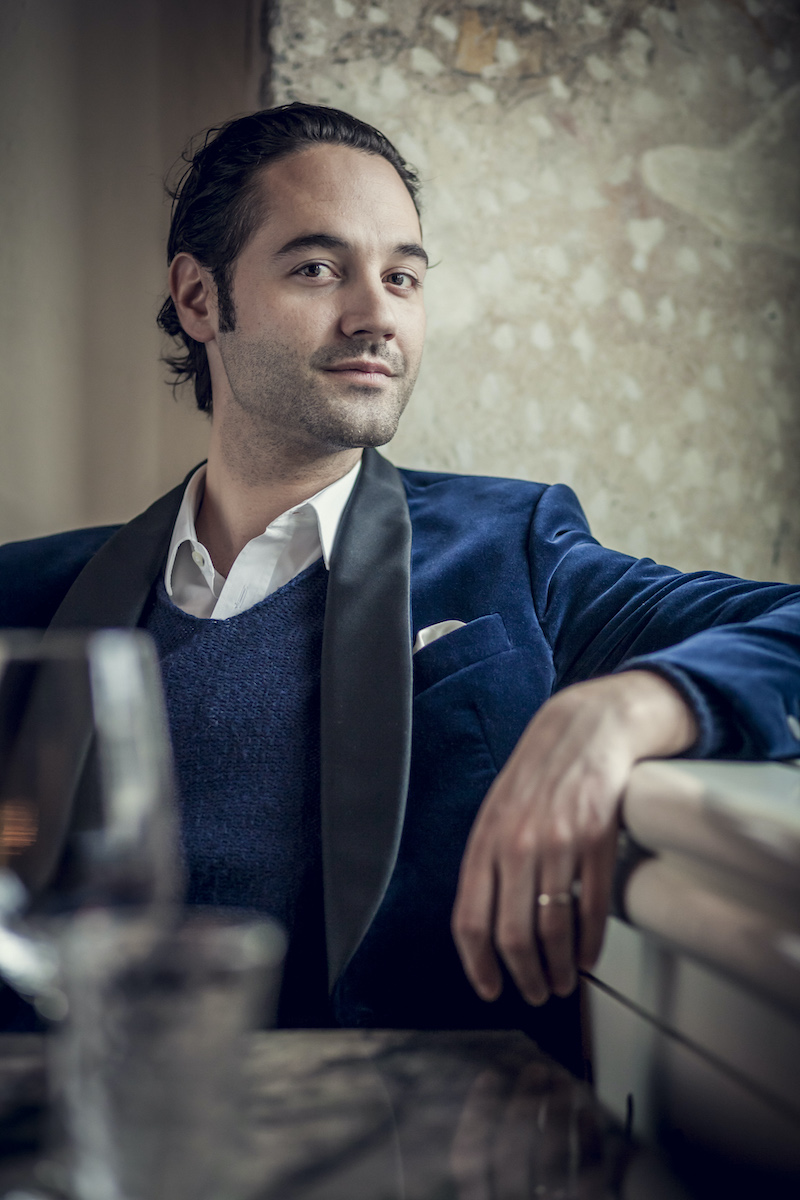
Collecting
What made you start collecting art?
Many factors have contributed to me becoming an art lover and collector. The breeding ground for my fascination with art was clearly laid by my mother. She was already interested in art as a young woman, worked in galleries and eventually collected. So I was lucky to grow up with art and the joy of it.
As an architect, I approach my work very much like an artist, in my thoughts and also in the sense of composition. So it was probably only a matter of time before I bought my first work.
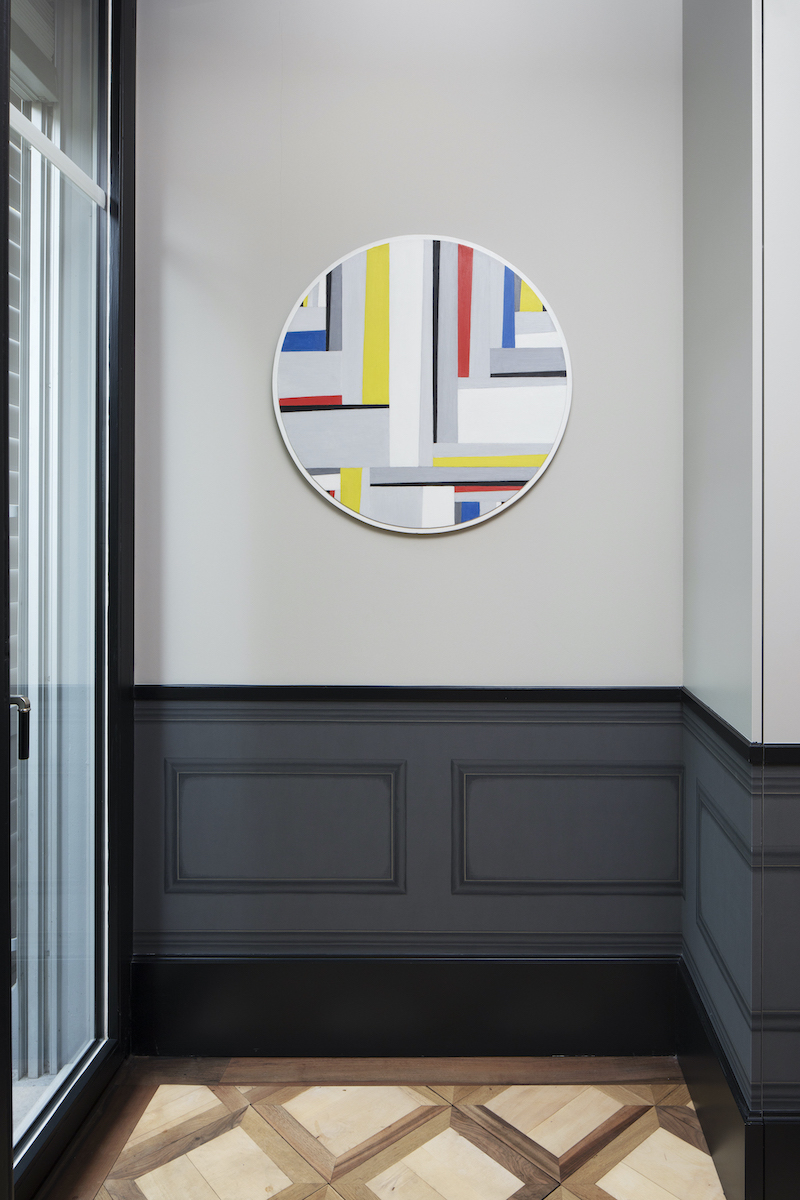
Why are you particularly attracted to geometric abstract art?
Themes such as composition, reduction to the essential and the right proportion are important aspects in architecture. Back to art: the possibility of different ways of reading a single work, the mental leap between the two- and three-dimensional, fascinates me. Art and architecture interact here. There are whole theories about this: Colin Rowe and Robert Slutzky’s book “Transparency” discusses relevant design methods.
But my interest lies not only in abstract art.
What were the first and the latest artworks you purchased?
One of the first works I purchased was a lithograph by Julian Opie. Currently, a work by Olafur Eliasson from the series “Atmospheric Compass” has been added to my collection.
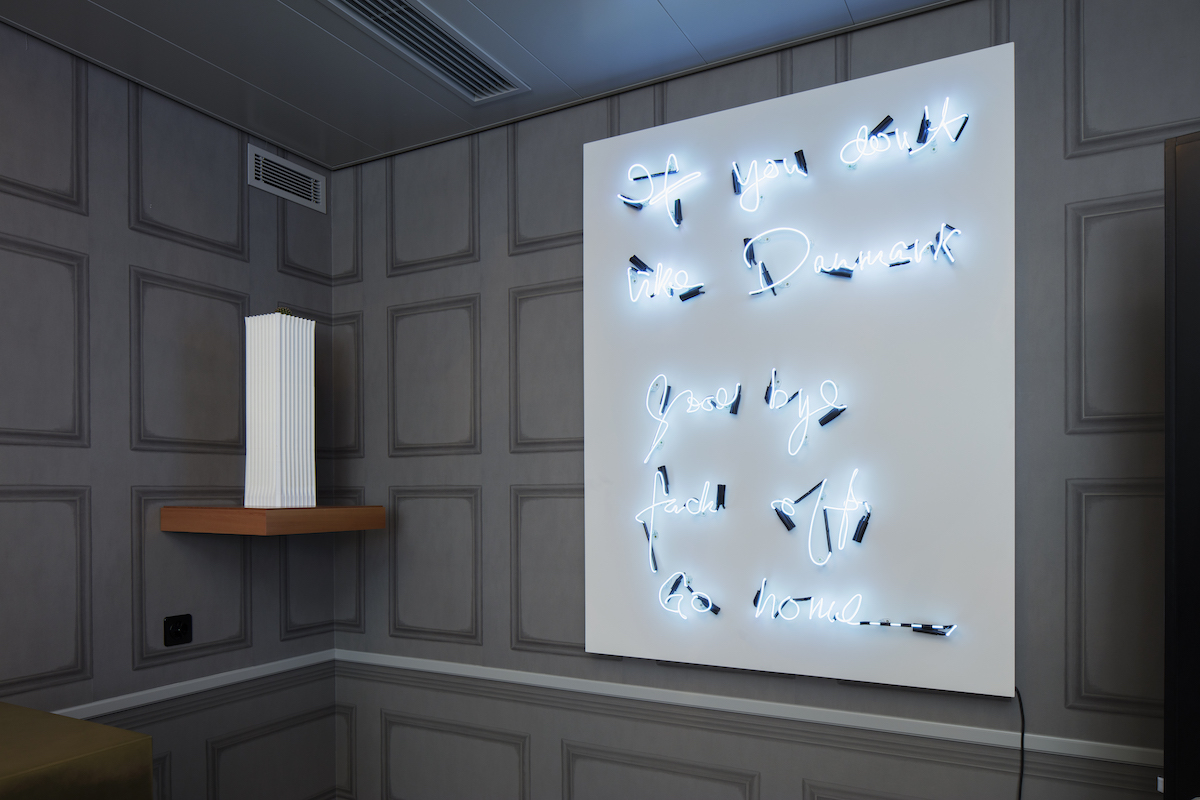
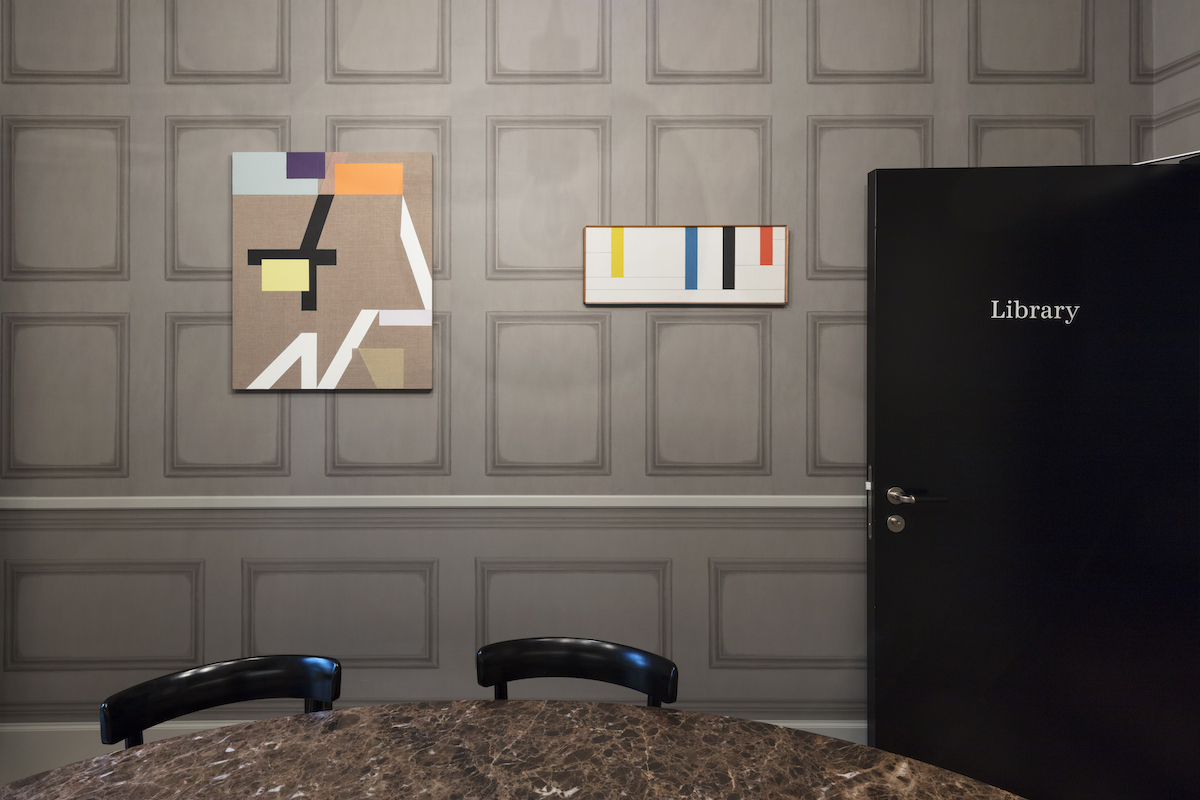
We Are Content (WAC)
What motivated to become an entrepreneur and set up WAC?
There was never a plan to set up “WAC”, instead, we set up one business after the other (mainly in the hotel, apartment, and food & beverage sectors) and grew organically into a group that we later called “WAC”. So it was rather our curiosity and entrepreneurial spirit accepting opportunities that brought us where we are now: the acronym “WAC” stands for “We Are Content”. The underlying idea is to develop real estate by means of content. In order to be able to do that in a sustainable way, one needs to have a deeper understanding of how different uses (content) really work. And that is why we have set up operating companies to run our venues that we develop. It allows us to translate our vision for a place into reality:
Ultimately, only an operator is able to cater to the customer journey on a daily basis. Conceptually, we try to enhance our customer’s experience by combining different uses in order to create more lively and dense spaces: our lobby, both at Boutique Hotel Helvetia and Volkshaus Basel, serves its main function for our guests to check in as well as offering a wunderkammer for art.
A collaboration with gallerist Stefan von Bartha caters for ever-changing displays of art, currently showing works by Barry Flanagan, Imi Knoebel, and Bob and Roberta Smith.
You understand art as a part of everyday life in a normal environment, instead of a museum or white-cube space. How do you live with your collection or showcase it at your venues?
Collecting is something dynamic in itself. Each work can stand on its own, or — more interestingly so — be put into dialogue with other artists’ positions by the collector (in a museum this would be the curator). We have great fun creating such dialogues in non-museum places, including our boutique hotels. In order to have a wider horizon for the aforementioned dialogue, we do not limit ourselves to positions from our own collection, but establish interesting partnerships with institutions, galleries, and artists. In this way, exciting hangings are created which may not have the same content as a museum exhibition, but are in their topicality and quality at the pulse of time.
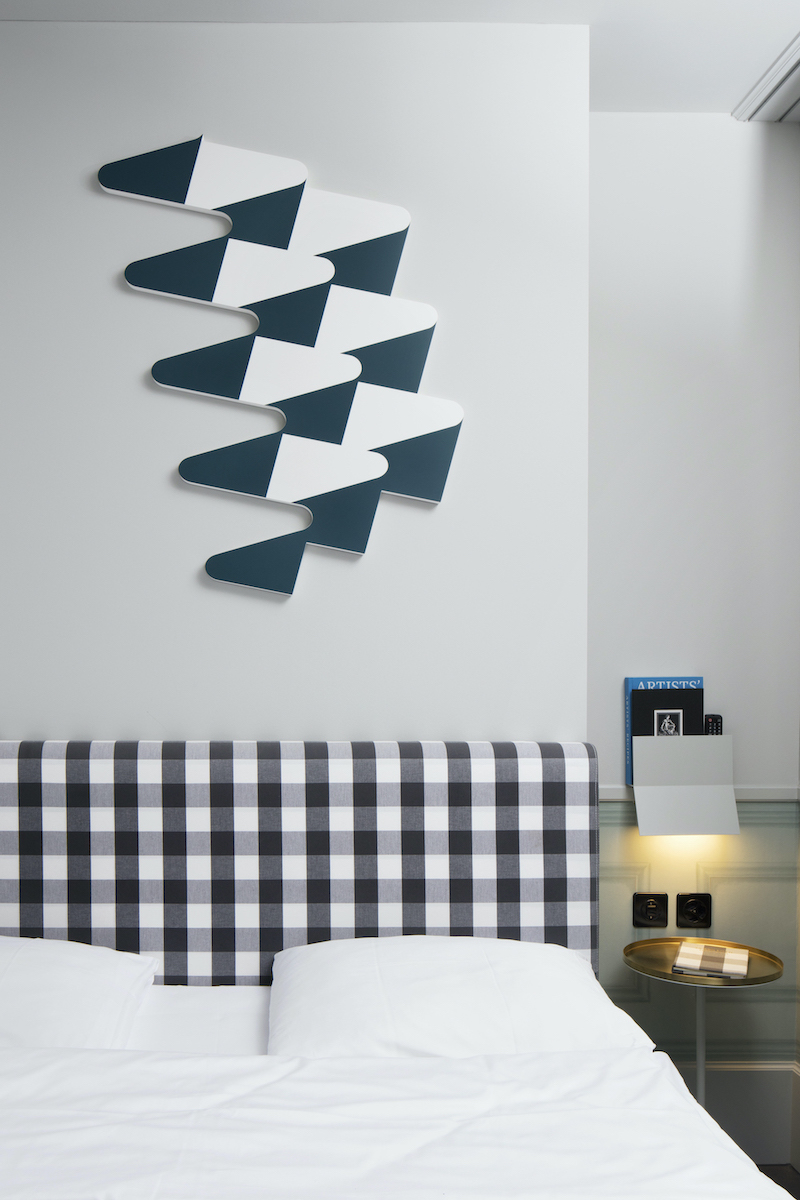
How important is it for you to meet the artists who created the artwork?
Since we value dialogue, and not just the “silent” one between two hung works, contact with artists is enormously important for us. This is, after all, the advantage of contemporary art in the first place: the possibility of an unfiltered and direct exchange with the artist about his/her work, his/her thoughts and his/her intention. In the meantime, some long-standing friendships have developed from these exchanges, and the artists have often also developed a personal relationship with our houses. This is how the circle closes.
How do you involve contemporary art and artists in your projects at WAC?
We pursue different approaches, which we implement in parallel. On one hand, we collect contemporary art and thus create a basis of works that can be exhibited in our venues. On the other hand, we engage artists to realize site-specific works for us. Finally, we maintain content-related collaborations with museums, galleries, artists, and curators. This social level, which is reinforced by public events, clearly contributes to our community and even defines it to a certain extent.
The most recent example of a site-specific work is probably — without exaggerating — a small sensation: we were able to get Imi Knoebel to take on our bar at Volkshaus Basel. At first we thought he would install something on the walls. But in dialogue, we quickly realized that he wasn’t interested in the walls at all, but more in the windows. The result is a unique, monumental glass work, which formally refers to his ‘Anima Mundi’ works. Once again, a dialogue is created, this time between architecture and art:
The darkly kept bar, designed by Herzog & de Meuron, is not “furnished” with art, but is given splashes of color by the daylight through the colorful transparent property of glass which cheerfully contributes to the atmosphere. At night, the reverse is the case, the colored artificial light of the bar radiates into the outside space.
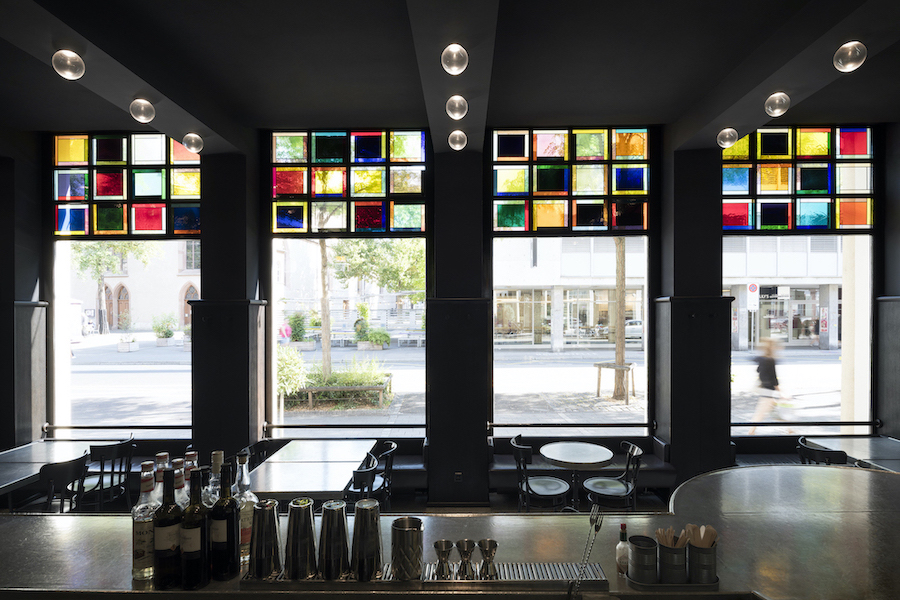
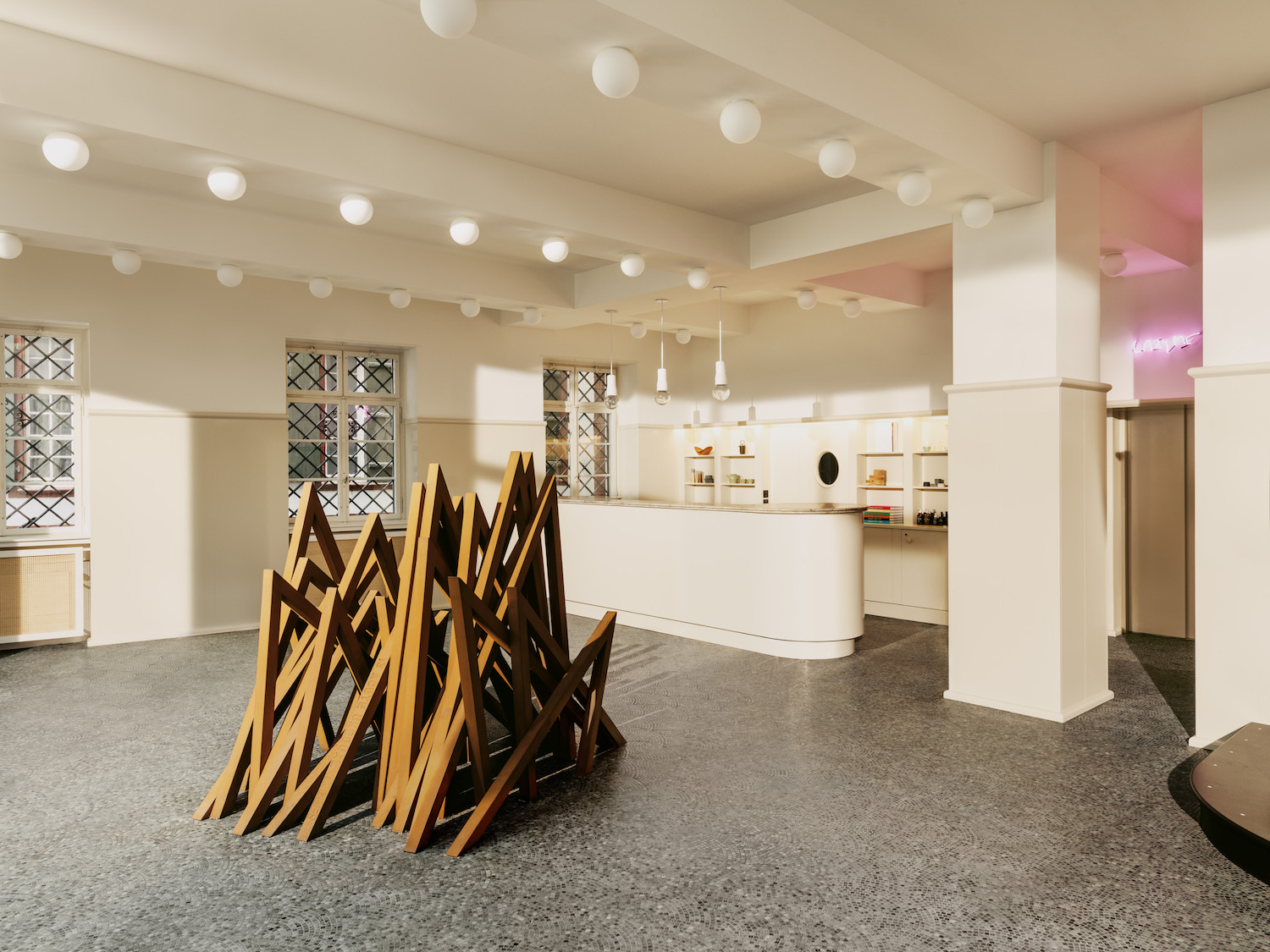
You have revitalized the historic 1925 building of Volkshaus in Basel. What is the concept behind?
The concept, that won us the public competition to take over the real estate and develop it, was based on the following idea:
We proposed to position the large building-complex in its entirety as a “one-stop-shop”. In order to achieve that, we revamped the main concert hall and all the other banquet facilities; we introduced a cosmopolitan brasserie with its bar and green courtyard, and swapped the existing office space for a boutique hotel. On an operational level, we added a cultural program ranging from concerts to art.
The entire complex bears now a clear signature and profits from the synergies of its outlets. It is very important to us, whilst functioning as “a city within the city”, to never lose contact with the local neighborhood and to be open for all kind of guest profiles. We enjoy a heterogeneous clientele, in other words the t-shirt-wearing guest next to the blazer-wearing one.
How did you overcome the challenges in realizing the concept?
The key challenge with an ambitious development like Volkshaus is, that one can only tell if the concept/vision works after one has spent all the money for the refurbishment. So as a “start-up” we had to get it right the first time. Therefore, we broke the repositioning of the venue down into 3 Phases. This meant a longer development time, however allowed us to adjust our concept whilst moving forward and gaining confidence, that what we proposed was working.
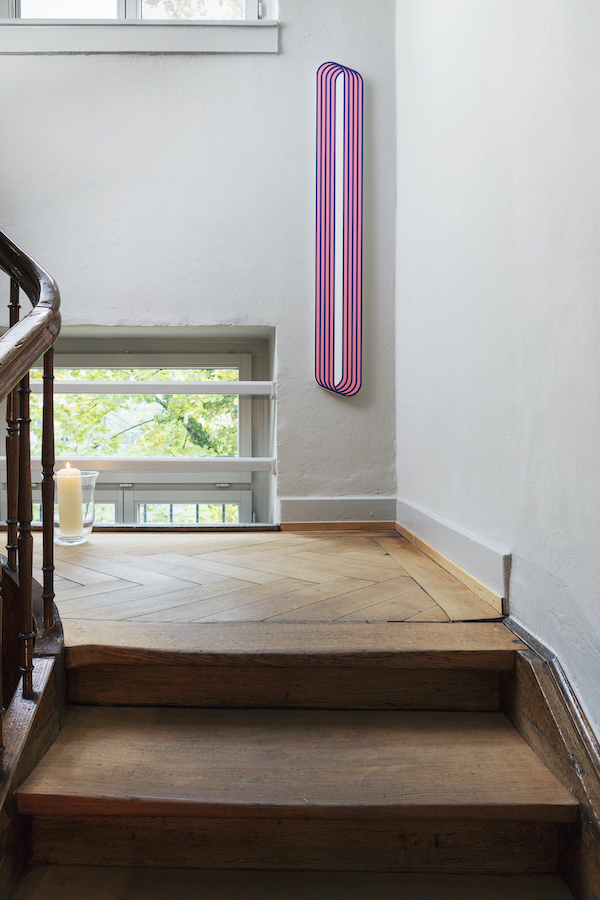
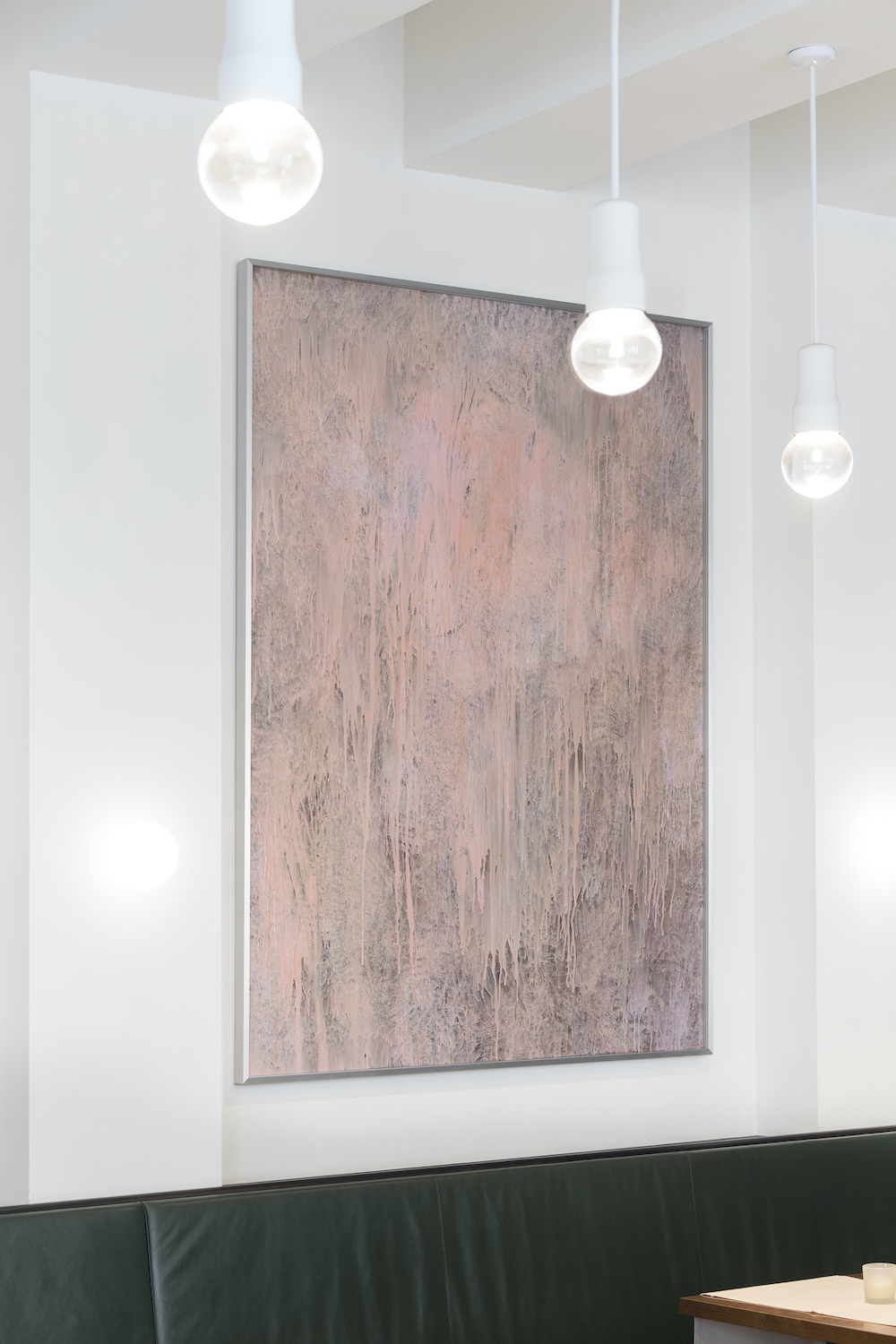
You have also lightened up Zurich’s Hotel-Restaurant Helvetia with lots of artworks. Can you illustrate several examples of commissioned artworks?
When we expanded the property on the Sihl, which was built in 1890 and is a listed building, from a restaurant to a boutique hotel in 2007, we did so in collaboration with independent curator Christoph Doswald, responsible for the first curated art display and for arranging an art intervention on the building. Thus, there has been a site-specific work by artist Philippe Decrauzat since the opening. Further, he implemented a collaboration with the neighboring Museum Haus Konstruktiv, which in an initial phase had given our operation loans from its collection. In addition, some works were purchased from the temporary loans of various friendly galleries, which we now have at our disposal on a permanent basis. We are also developing various formats with protagonists from our network, which are intended to promote experiences with art. A particularly meaningful collaboration is the one with the artist duo Ado Jahic and Comenius Röthlisberger. Under the title “Artists’ Recipes”, a compendium of recipes by contemporary artists has been created. The artists have put their favorite dishes on paper: the result is humorous, poetic, and practical entries from over 80 artists. We were able to bring the originals into our art collection, and together with the initiators we have now implemented placemats as copies from the original works for daily use in our restaurants.
How was the experience working with these artists?
For many reasons, it is an experience that I greatly enjoy. The artists – with their installation – add another layer to the experience of a space. In that regard, a space, whether a restaurant, a lobby, or a garden, stays dynamic. I enjoy the reasoning behind their proposed intervention and what it should achieve. Finally, letting the idea become reality always takes time, and the excitement when a work is finally placed at its destination is indescribable.
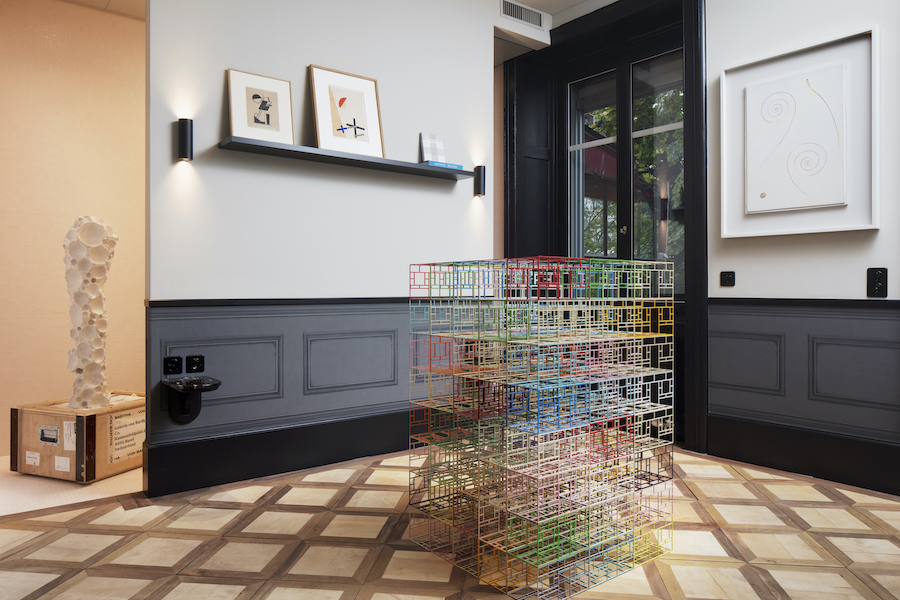
Courtesy of WAC
What are your upcoming projects this year?
We are going to launch the window installation by German artist Imi Knoebel at our Bar at Volkshaus Basel during Art Basel in collaboration with von Bartha gallery. Because of the uniqueness of the work and in honour of the artist, we will rename the Bar “Imi’s Bar”. The bar features a new stained-glass window that celebrates the city of Basel. Imi’s Bar is only the second space in the world to showcase stained glass window work by the artist, apart from Notre-Dame de Reims Cathedral.
In Zurich, we will display a new curated show with artworks from our collection and works on loan, introducing a new temporary space called “Chuchichäschtli” where we will reinvent the traditional Swiss cheese fondue.
Finally, we are working on a strategy to allow third parties to co-invest in art with us in order to be able to grow a more relevant collection.
Regarding Boutique Hotels, we are always in search of new opportunities and open to expanding our business abroad.
You once stated that art is a social proposition. Can you elaborate on this? And how does this belief influence your projects?
Art should be part of everyday life because it has the power to inspire and because art is an expression of our time and society. There is more to life than following a daily routine at work or passively consuming television. We believe that art should be surrounding us not only in museums, and that is why art has become a cornerstone of all our projects and part of our DNA. We seek to create systems that stay dynamic and allow for interventions by artists. We don’t just place an artwork on the wall, we rather engage with artists and grow our creative network.
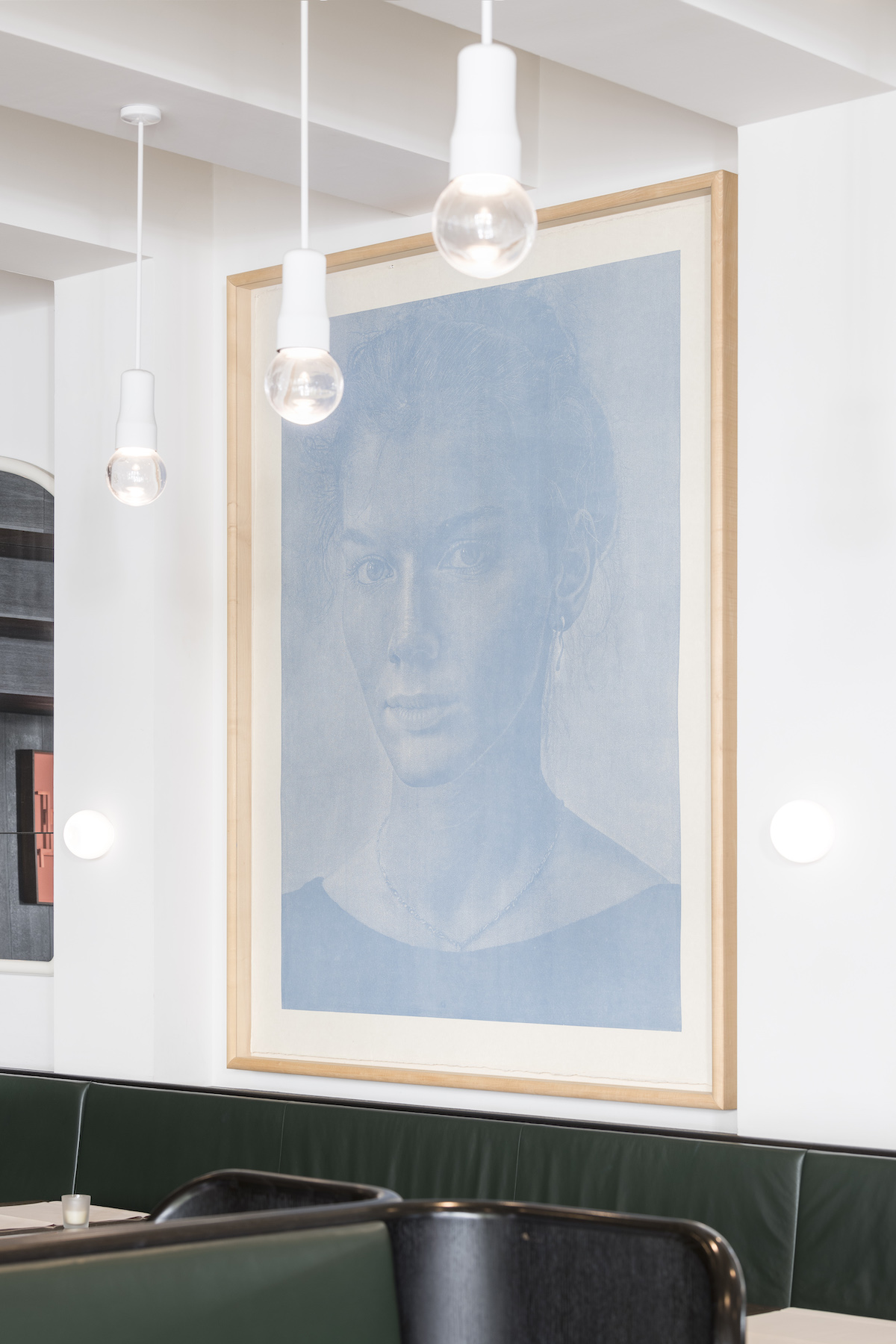
The Art World
What was your happiest moment being involved in art?
The beauty about being involved in art is that there is not a happiest moment, but rather always happy moments. And even better: they can be shared with friends and guests alike.
Who inspires you the most in the art world?
It is difficult to pin it down to one person. I am rather more inspired by magical places where everything seems to come together. Those are places like “La Colombe d’Or” in St. Paul de Vence, Kronenhalle in Zurich, Louisiana Museum of Modern Art in Humlebœk, and hopefully one day our venues…
Can you name contemporary artists who should be on our radar?
I could name many. Here a small selection: Imi Knoebel – come to the Imi Bar at Volkshaus and see for yourself. Pamela Rosenkranz – I just love her work and the interesting thoughts behind it. And finally, Florian Graf whose work and friendship have been inspiring to me.
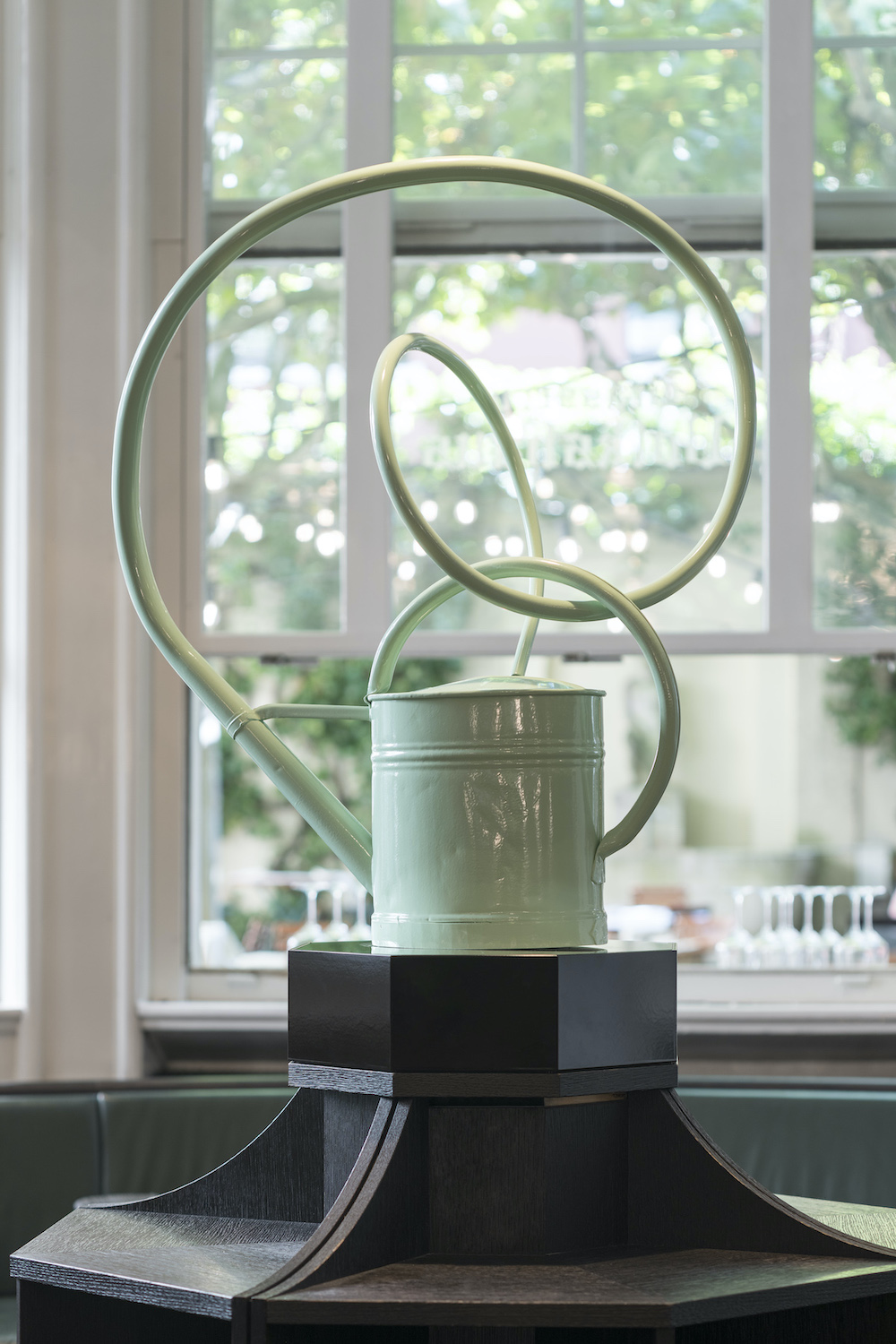
A selection of artists Leopold collects:
Florian Graf
Julian Opie
Olafur Eliasson
Pamela Rosenkranz
By Ricko Leung





